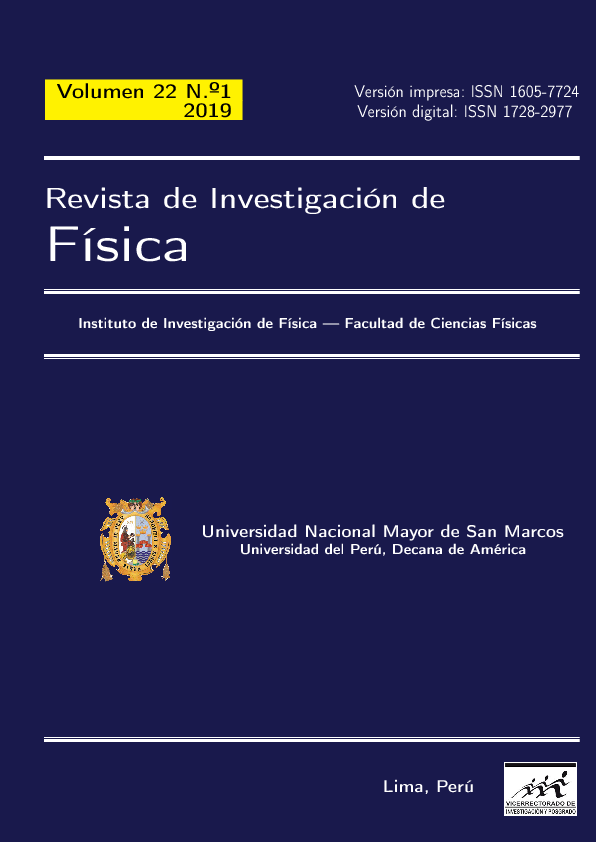Magnetic Properties of the Tuxtuac Meteorite via 57Fe Mössbauer Spectroscopy
DOI:
https://doi.org/10.15381/rif.v22i1.20254Keywords:
Tuxtuac meteorite, energy dispersive X-ray uorescence, X-ray diractometry, 57Fe transmission Mössbauer spectroscopyAbstract
It has been studied a sample of the Tuxtuac meteorite, which was classied as an ordinary chondrite. It was applied three analytical techniques. Thus, energy dispersive X-ray uorescence allowed us to identify iron, nickel and cobalt, which form the structure of the kamacite and taenite minerals. Likewise, X-rays diractometry allowed us to recognize the presence of the structural phases of the silicates olivine, pyroxene and orthopyroxene. Furthermore, 57Fe transmission Mössbauer spectroscopy indicated the presence of two magnetic sextets. One was assigned to troilite and the other, to goethite. After the magnetic separation process, this same technique was used to determine more detailed information about the magnetic minerals present in the sample. This resulted in other two magnetic sextets, which were assigned to kamacite and taenite, respectively. Besides, the presence of goethite in the sample may be the result of chemical weathering.
Downloads
Published
Issue
Section
License

This work is licensed under a Creative Commons Attribution 4.0 International License.
THE AUTHORS RETAIN THEIR RIGHTS:
a. The authors retain their trademark and patent rights, as well as any process or procedure described in the article.
b. The authors retain the right to share, copy, distribute, perform and publicly communicate the article published in the Revista de Investigación de Física (for example, place it in an institutional repository or publish it in a book), with an acknowledgment of its initial publication in the Revista de Investigación de Física.
c. The authors retain the right to make a subsequent publication of their work, to use the article or any part of it (for example: a compilation of their works, notes for conferences, thesis, or for a book), provided that they indicate the source. of publication (authors of the work, journal, volume, number and date).






